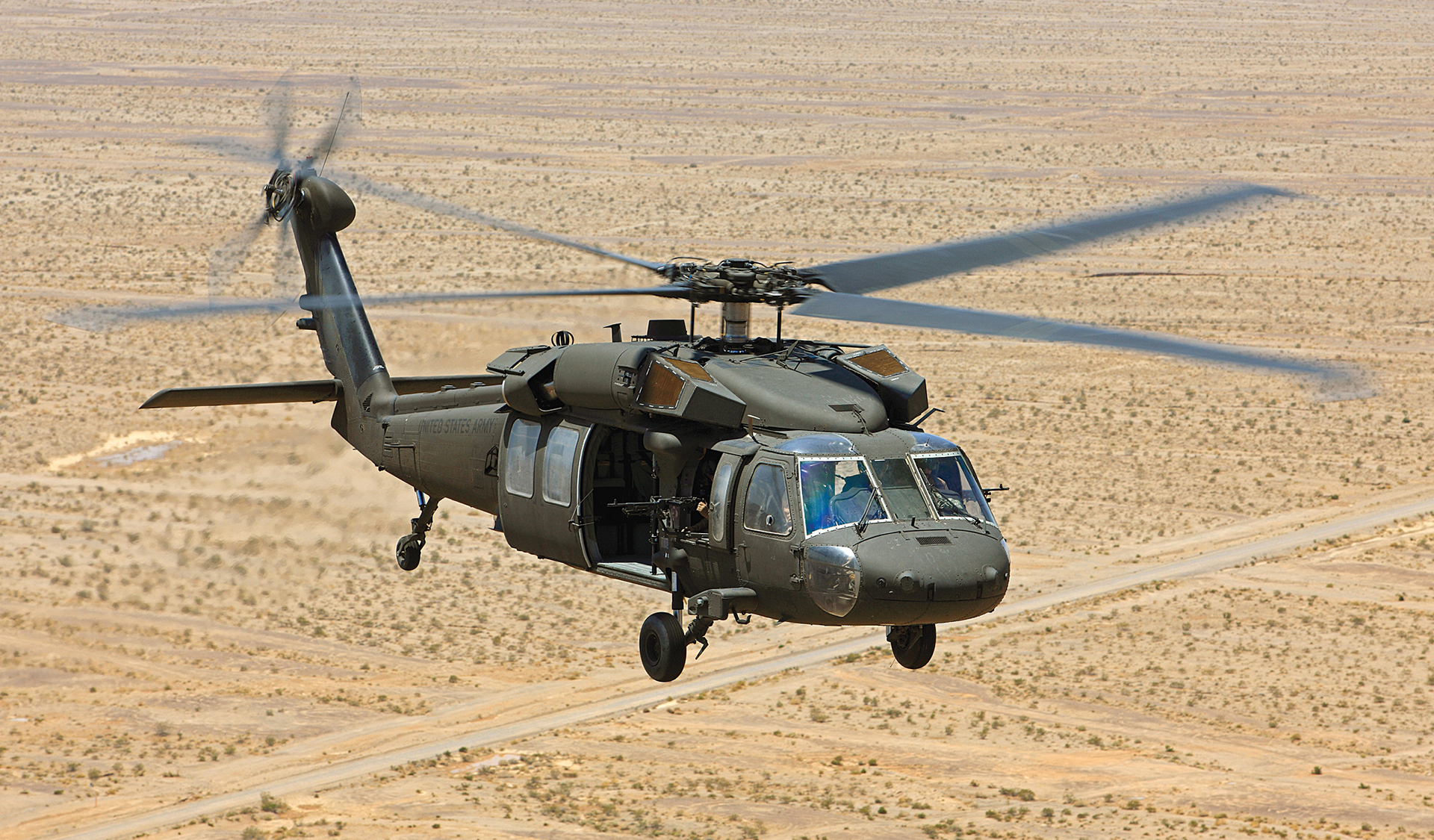Understanding the Mechanics and Design Behind Uh 60 Helicopters
The UH-60 helicopter, commonly understood as the Black Hawk, stands as a pinnacle of contemporary rotorcraft innovation, personifying a blend of durable engineering and elaborate mechanics. From its creation to its present versions, the development of this airplane showcases a fusion of technology and functionality. As we peel back the layers of the UH-60's layout, a world of complex systems and precise design comes to light. Recognizing the auto mechanics and engineering behind this versatile airplane unveils a world where accuracy meets power, and where each component plays an essential role in attaining trip.
History of UH-60 Helicopters
The history of UH-60 helicopters traces back to the late 1970s when the United States Army looked for a versatile and innovative energy helicopter to replace its aging fleet. In feedback to this demand, the Sikorsky Aircraft Company created the UH-60 Black Hawk helicopter. Presented in 1979, the UH-60 rapidly ended up being a staple in military operations due to its remarkable abilities.
The UH-60 was created to stand out in a selection of goals, including troop transportation, medical discharge, digital war, and special operations. Its capacity to adjust to various roles made it a beneficial asset to the U.S. uh 60. Army and other army forces worldwide
For many years, the UH-60 platform has actually gone through numerous upgrades and variants to boost its efficiency and equal advancing goal demands. These helicopters have seen comprehensive solution in problems such as the Gulf Battle, Afghanistan, and Iraq, showcasing their reliability and convenience in varied operational settings. The UH-60's rich background is a testament to its enduring tradition as a leading energy helicopter.

Engine and Power Solutions
Utilizing innovative propulsion modern technology, UH-60 helicopters are equipped with advanced engine and power systems to guarantee optimum efficiency and integrity in an array of operational situations. The UH-60, generally called the Black Hawk, is powered by 2 General Electric T700-GE-701D engines, each with the ability of supplying up to 1,940 shaft horsepower. These turboshaft engines give the needed drive for the helicopter to execute its missions properly, including army transportation, medical emptying, and combat support.

Blades System and Aerodynamics
Just how do the rotor system and aerodynamics of UH-60 helicopters add to their operational performance and flight capacities? The rotor system of the UH-60 helicopter plays an important role in offering lift and propulsion.
Aerodynamics additionally play a vital role in the performance of UH-60 helicopters. The streamlined body and rotor blade style lower drag, permitting the helicopter to attain address greater rates and better fuel effectiveness. The wind resistant design of the UH-60 additionally adds to its capacity to operate in diverse environmental conditions, including high elevations and warm temperatures.
Avionics and Flight Control Solution

In its detailed control with the view blades system and aerodynamics of UH-60 helicopters, the avionics and trip control systems form an essential network of technologies forming the airplane's operational capabilities. In the UH-60, these systems include digital display screens, communication radios, General practitioner navigating, weather radar, and autopilot systems.
The flight control systems of the UH-60 are accountable for translating the pilot's inputs into the appropriate adjustments to the rotor system, making sure stable trip and maneuverability. These systems are composed of hydraulic actuators, servos, and computers that interact to control the primary and tail blades, in addition to other flight control surface areas. By exactly managing the helicopter's flight characteristics, these systems allow pilots to do a variety of goals, from transport and search-and-rescue to deal with procedures, with accuracy and confidence.
Duty and Applications in Aeronautics
The duty and applications of avionics and trip control systems in aviation are integral to guaranteeing the efficient and safe operation of airplane, including UH-60 helicopters. Avionics systems in UH-60 helicopters incorporate a variety of digital systems that aid in navigation, interaction, monitoring, and controlling different airplane functions. These systems consist of digital displays, auto-pilot systems, communication radios, general practitioner navigating devices, and climate radar. Flight control systems play an essential function in maneuvering the helicopter in the air, keeping security, and making sure exact Check This Out movements. The fly-by-wire technology made use of in modern-day UH-60 helicopters translates pilot inputs into electronic signals, which are after that translated by the trip control computers to adjust the airplane's control surfaces. Additionally, these systems integrate security features such as auto-pilot modes, surface recognition cautioning systems, and stability augmentation systems to boost the total safety and functional capabilities of the UH-60 helicopters in various goals, including army transportation, medical evacuation, search and rescue, and aerial firefighting.
Conclusion
Finally, the UH-60 helicopter is a functional aircraft with a rich history and progressed design. Its engine and power systems, blades system, aerodynamics, avionics, and trip control systems all function together to make it a reliable and trusted device. The UH-60's role and applications in aviation are substantial, varying from armed forces operations to search and save goals. Its continued development and usage demonstrate its relevance in the field of aeronautics (uh 60).
In its intricate control with the blades system and aerodynamics of UH-60 helicopters, the avionics and flight control systems develop a crucial network of innovations forming the airplane's functional abilities.The trip control systems of the UH-60 are liable for converting the pilot's inputs into the proper adjustments to the blades system, guaranteeing steady trip and maneuverability. Avionics systems in UH-60 helicopters encompass a variety of digital systems that aid in navigation, communication, surveillance, and regulating various airplane functions. Furthermore, these systems include safety functions such as autopilot settings, terrain recognition warning systems, and stability enhancement systems to boost the overall safety and functional capacities of the UH-60 helicopters in various missions, including troop transportation, clinical emptying, search and rescue, and airborne firefighting.
Its engine and power systems, rotor system, the rules of aerodynamics, avionics, and trip control systems all work with each other to make it a reliable and reliable device.